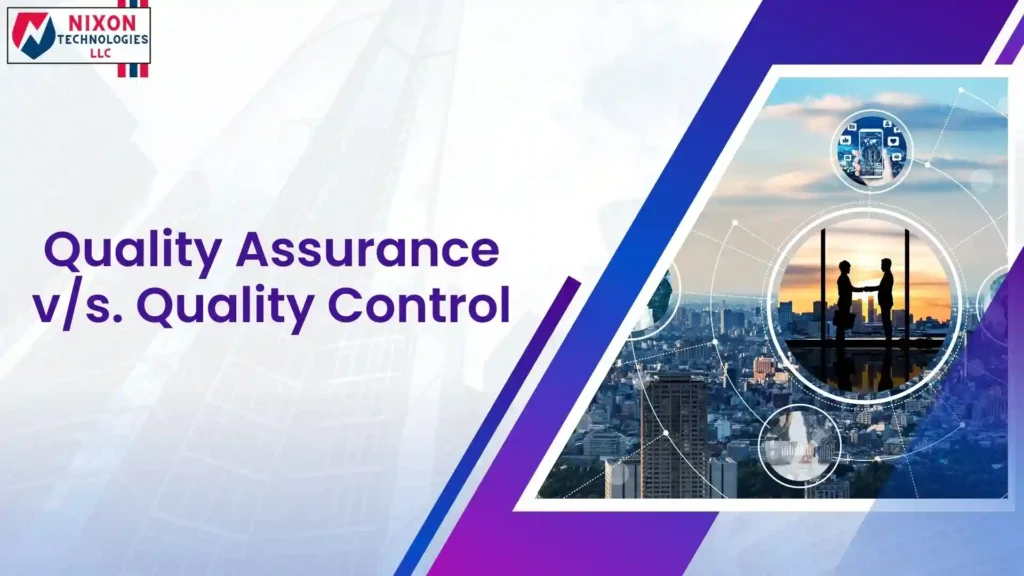In the realm of manufacturing, software development, healthcare, and various other industries, the terms “Quality Assurance” (QA) and “Quality Control” (QC) are frequently used. Often used interchangeably, these concepts, while related, serve distinct purposes in ensuring product or service quality. Nixon Technologies LLC exemplifies the importance of rigorous quality management practices in meeting client expectations.
Defining Quality Assurance (QA)
Quality Assurance is a proactive process aimed at preventing defects and errors in the development or manufacturing process. It focuses on the entire process rather than the product. QA encompasses all activities that establish and evaluate the processes that produce products.
Process Definition and Standardization
Defining standardized processes and procedures to ensure consistency and efficiency throughout the production or development lifecycle.
Training and Education
Providing training to employees to ensure they understand the processes, methodologies, and quality standards they need to adhere to.
Documentation and Compliance
Documenting processes, procedures, and quality standards to ensure compliance with regulatory requirements and industry best practices.
Continuous Improvement
Implementing mechanisms for ongoing evaluation and improvement of processes to enhance efficiency and quality.
Understanding Quality Control (QC)
Quality Control, on the other hand, is a reactive process focused on identifying defects and errors in the final product. It involves inspecting and testing the product to ensure it meets predefined quality standards. Key activities involved in QC include:
Inspection and Testing
Conducting inspections, tests, and checks at various stages of production or development to identify defects, deviations, or non-conformances.
Corrective Action
Taking corrective measures to address any identified defects or deviations from quality standards.
Sampling and Statistical Analysis
Using statistical methods and sampling techniques to analyze data and make informed decisions about product quality.
Feedback Loop
Providing feedback to the QA process based on the defects and issues identified during QC activities to improve processes and prevent future occurrences.
Focus
QA focuses on preventing defects by establishing and maintaining processes, while QC focuses on detecting defects by inspecting and testing the final product.
Timing
QA activities occur throughout the development or manufacturing process, while QC activities occur at the end of the process when the product is ready for inspection.
Responsibility
QA is the responsibility of everyone involved in the process, from management to frontline workers, while QC is typically the responsibility of specialized inspectors or quality control personnel.
Conclusion
While Quality Assurance and Quality Control are related concepts aimed at ensuring product or service quality, they serve different purposes and involve distinct activities. Both are essential components of a comprehensive quality management system, with QA focusing on preventing defects through process improvement and standardization, and QC focusing on detecting defects through inspection and testing. By understanding the differences between QA and QC and implementing both effectively, businesses can deliver high-quality products or services consistently, leading to increased customer satisfaction and business success.
The primary goal of Quality Assurance (QA) is to ensure that processes are in place to guarantee that the product or service will meet specified requirements. QA focuses on preventing defects. On the other hand, Quality Control (QC) is the process of identifying defects in the finished product and correcting them. QC aims to identify and fix defects in the product itself.
Quality Assurance (QA) contributes to the overall quality management system by establishing processes, standards, and procedures to ensure that products or services meet specified requirements. It involves continuous monitoring and improvement of processes to prevent defects from occurring. By implementing QA practices, organizations can enhance efficiency, reduce costs, and increase customer satisfaction.
Suppose a software development company implements QA practices by defining coding standards, conducting code reviews, and performing automated testing throughout the development process. This is an example of QA as it focuses on preventing defects. On the other hand, if the company identifies and fixes bugs in the software after it has been developed and tested, this represents QC, which deals with detecting and correcting defects in the final product.

